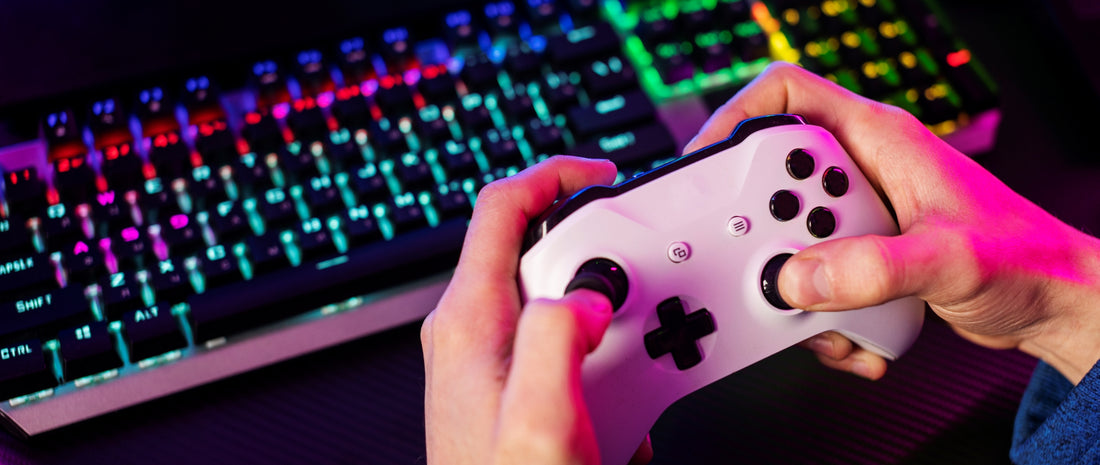Gaming controllers have come a long way since the early days of video games. The first game controllers were simple joysticks and buttons that allowed players to move their characters and perform basic actions. Today, gaming controllers are much more advanced, with features like motion sensing, touch pads, and voice recognition. In this blog post, we will explore how gaming controllers have evolved over the years and how they are changing the way we play video games.
The Evolution of Gaming Controllers
The first game controllers were simple devices with one or two buttons and a joystick. These controllers were used for arcade games and early home console systems like the Atari 2600. As video games evolved, so did the controllers. The NES controller introduced the concept of a directional pad, which allowed players to move their characters in four directions instead of just two. The Sega Genesis controller added more buttons, and the Super Nintendo controller introduced shoulder buttons and improved ergonomics.
The PlayStation controller, which was released in 1994, was a major step forward in controller design. It featured two analog sticks, which allowed players to control their characters in three dimensions. This was a game-changer for 3D games like Super Mario 64 and the first-person shooter genre. The Xbox controller, which was released in 2001, added triggers and made improvements to the button layout and ergonomics.
In recent years, gaming controllers have become even more advanced. The Wii Remote, which was released in 2006, introduced motion sensing technology, which allowed players to control games by moving the controller in the air. The PlayStation Move and Xbox Kinect added similar features. The Nintendo Switch controller, which was released in 2017, features detachable controllers that can be used in a variety of configurations.
The Impact of Gaming Controllers on Gameplay
Gaming controllers have had a significant impact on gameplay over the years. The introduction of the directional pad and analog sticks allowed for more precise control over characters, which made games more immersive and challenging. The addition of more buttons and triggers allowed for more complex gameplay mechanics, such as the ability to aim and shoot in first-person shooters.
The introduction of motion sensing technology has also had a significant impact on gameplay. Games like Wii Sports and Kinect Adventures allowed players to participate in sports and other activities by mimicking the real-life motions required. This made games more interactive and accessible to a wider audience.
The use of touch pads on gaming controllers has also opened up new possibilities for gameplay. The PlayStation 4 controller features a touch pad that can be used for menu navigation and gameplay mechanics. The Nintendo Switch controller features a touch screen that can be used for menu navigation and gameplay mechanics.
Voice recognition technology has also been integrated into some gaming controllers. The Xbox One controller features a microphone that can be used for voice commands, and the PlayStation 4 controller features a built-in speaker that can be used for in-game communication.
The Future of Gaming Controllers
As gaming technology continues to evolve, so will gaming controllers. It is likely that we will see even more advanced motion sensing technology, as well as improvements to voice recognition and touch pad technology. Virtual reality and augmented reality technologies may also play a role in the future of gaming controllers.
One potential area of innovation for gaming controllers is haptic feedback technology. Haptic feedback technology allows for the simulation of physical sensations, such as the feeling of raindrops or the recoil of a gun. This technology could be used to create more immersive gaming experiences and could be integrated into gaming controllers in the future.
Another potential area of innovation is the use of biometric sensors in gaming controllers. Biometric sensors can measure things like heart rate and skin conductance, which could be used to create more personalized gaming experiences.
In Summary
From simple joysticks and buttons to motion sensing, touch pads and voice recognition technology, gaming controllers have transformed the gaming experience. The evolution of gaming controllers has had a significant impact on gameplay, making games more immersive, challenging, and accessible to a wider audience. As gaming technology continues to advance, so will gaming controllers, with potential areas of innovation including haptic feedback technology and the use of biometric sensors.

